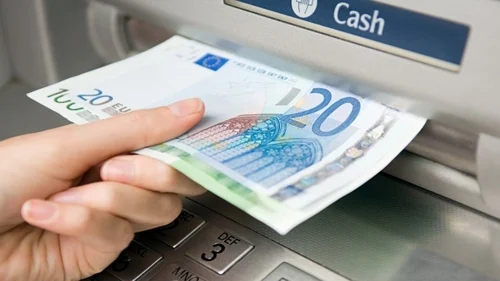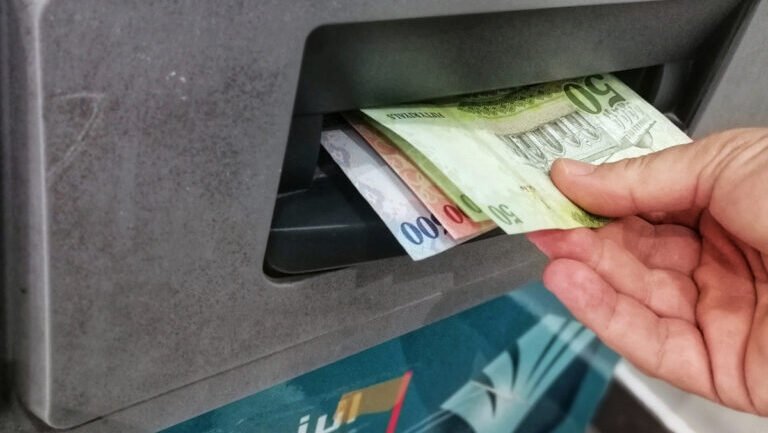Saudi Arabia’s banking sector has entered 2025 with remarkable momentum, posting record profits and setting the tone for an optimistic year ahead. The strong performance reflects robust economic fundamentals, a renewed appetite for lending, and a surge in non-interest income streams. The sector’s collective net income soared to new highs in the first quarter, inspiring confidence across local and global investors alike.
The year opened with a decisive boost to profitability, revealing a banking landscape that is not only resilient but also highly adaptive. This impressive start is more than just numbers — it symbolizes the steady transformation of the Kingdom’s financial system as it moves boldly towards Vision 2030 goals and cements its place as a regional powerhouse.
Record-Breaking Profits Drive Confidence
In the first quarter of 2025, Saudi banks reported a combined net income of SAR 22.2 billion, marking a 6.3% increase compared to the previous quarter and nearly 19% higher year-over-year. This surge demonstrates the sector’s ability to maintain strong profitability despite global economic uncertainties and regional challenges.

The return on equity climbed to an impressive 15.3%, a clear sign that banks are deploying capital efficiently and extracting maximum value from their assets. Meanwhile, the return on assets reached around 2.1%, reinforcing the strength of balance sheets across the sector.
This growth is supported by a disciplined focus on cost efficiency and risk management. Banks have successfully controlled their cost-to-income ratios, bringing them down below 30%, and maintained tight control over loan quality, resulting in stable non-performing loan (NPL) levels. The collective focus on efficiency and quality ensures that profitability is not coming at the expense of stability.

Lending Boom Leads the Charge
A key contributor to the sector’s stellar performance is the explosive growth in lending activities. Total net advances rose by 5.4% on a quarterly basis and 16.5% on an annual basis. Corporate lending took the spotlight, surging by 7.5% in the first quarter alone. Businesses across the Kingdom are ramping up their expansion plans, tapping into new projects and growth opportunities, and banks have positioned themselves as pivotal partners in this journey.
The mortgage segment also experienced robust momentum, with new mortgage loans averaging SAR 9.3 billion per month, a remarkable 26% jump from the same period last year. The government’s focus on housing initiatives and urban development, aligned with Vision 2030, has catalyzed demand for residential financing, creating a win-win scenario for both banks and Saudi citizens.
On the funding side, deposits continued to grow steadily, rising by 4% quarter-over-quarter and 6.5% year-over-year. The loan-to-deposit ratio climbed to approximately 106%, signaling a strong appetite for lending and robust credit expansion. Yet, banks have maintained prudent liquidity buffers, keeping the regulatory loan-to-deposit ratio close to 83%, ensuring they remain well-positioned to manage future risks.
Rising Non-Interest Income Bolsters Diversification
While interest income continues to be a significant revenue driver, Saudi banks have been intentionally shifting toward fee-based and non-interest income sources. In the first quarter of 2025, non-interest income rose by 9.6% compared to the previous quarter, supported by higher fees from trade finance, foreign exchange activities, and investment gains.
This diversification effort is not accidental but part of a strategic plan to make banks less dependent on interest rate cycles and more resilient against external shocks. By expanding their offerings in areas like wealth management, insurance brokerage, and digital payment solutions, banks have created additional value streams and positioned themselves for sustainable growth.
Saudi banks reported operating income growth of 3.2% quarter-over-quarter, while net interest income rose by 11% year-over-year to SAR 29.6 billion. These robust numbers highlight a strong foundation for future revenue, driven by a balanced mix of lending, investments, and service-based income.
Prudent Risk Management and Strong Asset Quality
Saudi banks have shown unwavering commitment to maintaining asset quality, a critical factor for long-term stability. The gross non-performing loan ratio has remained stable at around 1.24%, indicating effective credit screening and proactive risk management practices.
Coverage ratios remain healthy at approximately 127%, providing an ample cushion against potential credit losses. The cost of risk also declined significantly, reaching 26 basis points compared to 39 basis points a year ago, reflecting improved asset quality and the positive impact of proactive provisioning strategies.

These metrics underscore the sector’s ability to grow aggressively without compromising on safety. It’s a delicate balance that Saudi banks seem to have mastered in recent years, further enhancing investor and customer confidence.
Strong Operational Efficiency
Operational efficiency has been a major focus area for Saudi banks, and the results are beginning to show. The cost-to-income ratio fell to 29.8%, improving by nearly 150 basis points from the previous quarter and over 180 basis points year-over-year. While operating expenses rose modestly by 6.3% year-over-year, this increase has been well contained against rising revenues, leading to improved overall efficiency.
Digitization and automation efforts have played a crucial role here. Banks have adopted advanced digital platforms to streamline processes, reduce manual interventions, and deliver better customer experiences. From mobile banking apps to AI-driven customer support, these innovations are paying off by driving both customer satisfaction and operational savings.
Digital Banking and Fintech Momentum
The transformation in Saudi banking is strongly intertwined with the rapid adoption of digital technologies. The rise of digital payment platforms and fintech services has not only revolutionized customer interactions but also contributed significantly to revenue diversification.
Mobile payments, especially through local platforms, have seen exponential growth. Transaction volumes and values have surged as consumers and businesses embrace cashless solutions, pushing banks to upgrade their digital capabilities further. This shift supports Saudi Arabia’s broader ambitions to become a cashless society and reinforces its position as a tech-savvy financial hub in the region.
Beyond consumer-facing tech, banks are leveraging big data, AI, and blockchain solutions to enhance risk assessment, optimize lending decisions, and improve fraud detection. These digital advancements are creating new revenue opportunities and providing competitive advantages in an increasingly crowded market.
Vision 2030: A Catalyst for Growth
The momentum in the banking sector is closely aligned with the Kingdom’s Vision 2030 agenda, which aims to diversify the economy and reduce dependence on oil revenues. Massive government investments in infrastructure, tourism, entertainment, and green energy have spurred demand for credit and financial services, creating a favorable environment for banks to thrive.
Banks have become instrumental in financing mega-projects, supporting small and medium-sized enterprises (SMEs), and facilitating homeownership programs. As economic diversification gains pace, banks are expected to play an even bigger role, providing not only financing but also strategic advisory services, digital solutions, and investment products.
This symbiotic relationship between economic transformation and banking sector growth is a powerful force propelling Saudi Arabia toward its long-term goals. It demonstrates how financial institutions can act as enablers of national development while also securing profitable growth for themselves.
Outlook for 2025 and Beyond

Looking ahead, Saudi banks are well-positioned to maintain their strong performance throughout 2025. While some margin pressures may arise due to evolving interest rate environments and competitive dynamics, the robust lending growth and diversified income streams provide ample cushion.
Digital banking and fintech innovations are expected to gain further traction, driving efficiency and opening up new business lines. As banks continue investing in advanced technologies, customer experience will improve, and operational costs will decline, boosting profitability even further.
On the risk front, banks will need to stay vigilant. Global economic fluctuations, regional geopolitical shifts, and potential credit market tightening could pose challenges. However, with strong capital buffers, conservative provisioning policies, and a solid track record of asset quality management, Saudi banks are better equipped than ever to navigate uncertainties.
The ongoing push for ESG (Environmental, Social, and Governance) practices will also shape future strategies. Banks are increasingly incorporating sustainability considerations into their lending and investment decisions, which not only aligns with global trends but also enhances their reputation among investors and customers.
Conclusion: A New Era of Banking Excellence
Saudi Arabia’s banking sector has kicked off 2025 with a bang, showcasing record-breaking profits, strong balance sheets, and remarkable operational efficiency. The sector’s ability to combine aggressive growth with prudent risk management is a testament to its maturity and strategic foresight.
Driven by robust lending, expanding non-interest revenues, digital transformation, and support for national development initiatives, Saudi banks are writing a new chapter in regional banking history. They are no longer just financial institutions; they have become strategic enablers of economic diversification and innovation.
As the Kingdom pushes forward with its Vision 2030 ambitions, the banking sector stands as a pillar of stability and growth, inspiring confidence among global investors, local businesses, and everyday consumers alike. The strong start to 2025 is more than a temporary spike; it signals a sustainable path forward, setting the stage for a year — and a decade — of extraordinary transformation and success.
Do follow UAE Stories on Instagram
Read More: How Iraqis in Dubai Beat the WhatsApp Ban with a VPN














